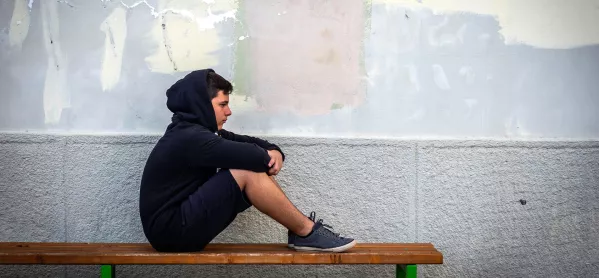- Home
- Exclusions: is our gender bias damaging boys?
Exclusions: is our gender bias damaging boys?

In the academic year 2017-18, there were 7,905 permanent exclusions across England, which represents 0.1 per cent of the total school-age population.
Of these young people, only 1,787 (23 per cent) were girls.
The picture in primary-aged pupils is particularly extreme.
Quick read: ‘Children who don’t fit? Maybe the problem is us’
Quick listen: Why there is no such thing as an unteachable child
Want to know more? What colleges can learn from mental health units
Only 9 per cent of permanently excluded young people in the age group are female (compared with 25 per cent of secondary-aged pupils).
In my school, a pupil referral unit educating predominantly permanently excluded pupils, girls make up less than 20 per cent of our 464-strong cohort.
This isn’t a new phenomenon; male exclusions have long made up more than 80 per cent of our numbers.
But what is driving such an extreme disparity? Are girls simply less challenging? Is their behaviour less extreme or dangerous? Do we get less persistent disruption from girls?
Overall, the answer to those questions is no. The girls in our school are at least as challenging as the boys and some of them are far more so.
Time for tough questions
So perhaps it is time that we asked ourselves, as a system, why so many more boys are excluded than girls.
The national picture tells us that girls are far less likely to be involved in physical altercations or carry weapons; for example, the Millennium Cohort Study found that more than 70 per cent of 14-year-olds who admitted to carrying knives were male. So they are obviously less likely to be excluded for those reasons.
But there is much more to it than that.
For starters, there seems to be a far greater acceptance of mental health issues in girls. In my experience, schools are far more likely to accept that challenging behaviour from female students is driven by mental health needs, such as anxiety, than in boys. Our tolerance levels, therefore, are not equal.
Harsher treatment
In 2016, Brown University released research that found stereotypes about boys’ behaviour may lead to educators taking harsher action.
This can lead from something very low level - refusing to remove a coat, for example - escalating into something much more serious due to the reaction of the staff, rather than the pupil.
There’s also the variation in perceived threat level, particularly as students get older. It’s easy to see why some teaching staff may feel threatened and even scared by some boys displaying challenging behaviour.
Older boys, in particular, are often larger than staff and this can feel threatening. They can be quite aggressive (although, in my experience, they mostly want to be listened to rather than attack you). To put it into context, in 13 years working in a PRU I have only been hit by a pupil twice.
I have witnessed many staff responding through fear when confronted with a threat from a 15-year-old boy. The teacher may shout or attempt to exert their own authority. This can be explosive and often makes a situation worse.
It’s fair to say that the most challenging girls display almost identical behaviour - shouting, physical posturing and verbal threats - yet staff seem to feel far less threatened.
It’s possible, as Brown University reported, that this is simply down to stereotypes; knowing that girls are less likely to carry weapons, for example, may result in staff feeling greater confidence in challenging the behaviour in a calmer and more reasonable way.
This in itself would be likely to lead to a better reaction from the pupil, de-escalating a situation, rather than making it worse.
Perceived threat
That reduced level of perceived threat is important. It allows staff to react in a more rational way as they are not experiencing their own fight-or-flight response, enabling them to begin the process of de-escalation.
There is also the broader question of whether our education system disadvantages boys in general. We know that, in general, boys are more active and enjoy learning in ways that are more practical. Couple this with the greater prevalence of issues such as ADHD in boys and it’s clear that there is a cohort of pupils, particularly boys, for whom the traditional school education does not work.
As educators, we must take heed of our unconscious biases; I have seen too many boys excluded from school for what, in the first instance, started as a small incident and escalated due to the reaction of the staff members.
All school staff, particularly those new to the profession, need better input around behaviour management, need a better understanding of the types of behaviours pupils may exhibit and need to know how to react to these effectively.
Building confidence among staff will help to reduce this unconscious bias. Where school staff feel they have a range of skills and strategies to deal with most behaviours and that they have appropriate behaviour support structures within the school, they are likely to feel less threatened.
It is consequently imperative that we upskill, model and empower staff to manage the behaviours of both girls and boys. It is this that will make the difference.
Steve Howell is the headteacher of the City of Birmingham School (COBS)
Keep reading for just £1 per month
You've reached your limit of free articles this month. Subscribe for £1 per month for three months and get:
- Unlimited access to all Tes magazine content
- Exclusive subscriber-only stories
- Award-winning email newsletters


